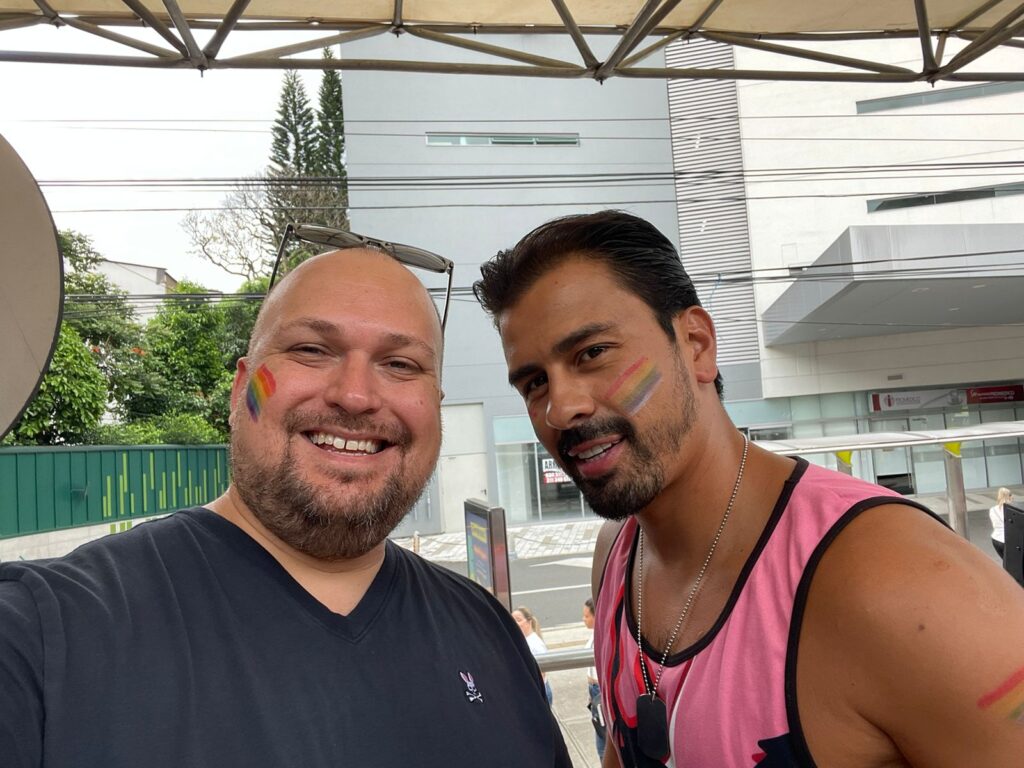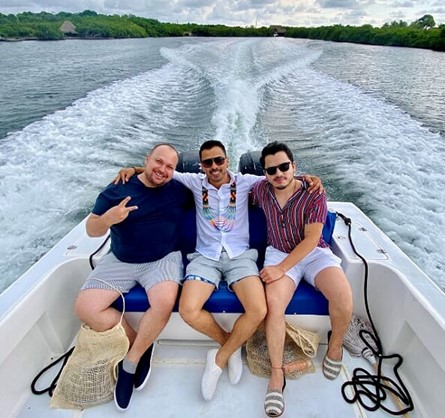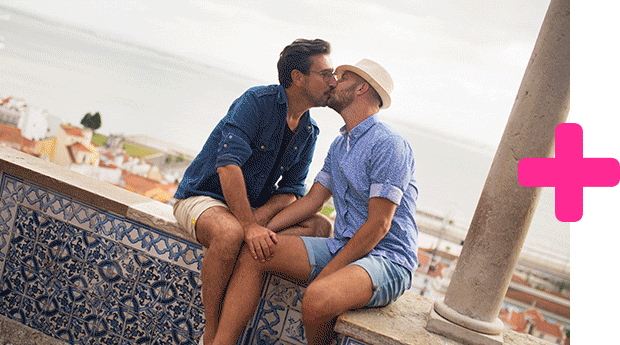Out in Colombia founder Sam Castañeda Holdren grew up in a small farming town in Central California. He went to university in Arizona and worked in marketing and communications in the not-for-profit sector in Boston, Massachusetts before coming to a point in his life, about 10 years ago, where he wanted a big change. He was out of work and didn’t want to conduct his job search in a freezing cold Boston apartment. He also wanted to learn Spanish.
He set up camp in Medellín, Colombia, and quickly fell in love with the city and the country. (You can read our Medellín insider’s guide here.) He moved there in 2015, and eight years ago established Out in Colombia, a bespoke travel agency aimed at LGBTQ+ travellers who want to have a one-of-a-kind adventure in the increasingly trendy destination. From outdoor expeditions to exclusive cultural events, Out in Colombia can create an array of custom expeditions for any group size. Castañeda Holdren has a knack for knowing what queer travellers, particular gay men, want. For starters, Out in Colombia’s experience managers are handsome, charming and know what’s what in the gay scene.

There are lots of warm places you can go to learn Spanish and find a new direction for yourself. Why did you pick Medellín?
I had some friends I had worked with who talked positively about Colombia. I did some more research and saw how websites talked about it being one of the most innovative cities in the world, that it has springtime weather all year long. The Spanish spoken here is relatively neutral. It sounded perfect. And what I found was just paradise.
When you first arrived, what surprised you most about the country?
A lot of times people have this image of Latin America, that it’s not that developed, that it’s not well organized, it’s not clean. Then you come here and you’re surrounded by greenery, mixed with a city that’s a well-organized metropolis. You have this feeling you’re in a jungle—I know what a jungle is, I’ve been to the Amazon and I know it’s not a jungle here. But it has that feeling. People are very friendly and extraordinarily welcoming to outsiders.
The people of Medellín, the Paisas, have a very particular character which I sometimes find hard to describe. How would you describe it?
I think they’re polite, kind, a little formal, actually. If they don’t know you, they are formal, but still very friendly and warm. “Warm” is the word I’d use.
How have your views of the country changed since you’ve been living there?
A lot has happened in the last eight years. The peace process happened—when I first came down here, I didn’t even know there was technically still a conflict going on. The peace deal was signed in 2016. It’s become happier. For LGBTQ+ people, it feels like it’s growing up. The community is becoming more open and welcoming. You see more diverse expressions and lots of events, lots of visibility for the community.
I first visited Medellín about a dozen years ago and, though I fell in love with it, gay life felt like it was on the down-low. It’s really opened up since then.
I think the peace deal played a role in that. Before that happened, people were more guarded, families more protective. It was a form of self-preservation. It was less likely that somebody would approach you at a bar because people would just hang out with their friends. After the peace deal, a conversation around social issues started. People started talking about queer issues, and other social issues, and at the same time the queer community was becoming much more visible.
What’s your mission with Out in Colombia?
There are so many ways to answer that. I’ll start on the fundamental sustainability of responsible tourism. We’re in a developing country and we want to make sure we have an impact. That’s both for the traveller, the people coming here for an amazing, perhaps life-changing experience, but also for the people who live here. It’s an intercultural exchange and people can learn from each other and have a great time. It’s also about creating a space for our LGBTQ+ people to feel safe and comfortable to travel just as they are here in Colombia.
How has the clientele changed and how has your business evolved since you started out?
We’re getting a lot more women, which is great. But largely the biggest proportion of our clientele is still gay men, usually forties and up. I think that’s because our focus is really on offering these exclusive itineraries, these highly-personalized, high-touch experiences where we really take care of our guests so they can travel worry free. Not everybody has the budget for that type of personalized service. We’re exploring ways to diversify our clientele.
What’s one of the most interesting requests you’ve had?
People want to connect with communities so we have LGBTQ+ guides. But really, people have diverse interests. Some people want a beach, but not everybody wants a beach. We often like to have the welcome dinner at people’s homes. People appreciate that as their first experience of a place, meeting people who are from here in an intimate venue. Those are memorable experiences because it breaks down barriers and breaks the ice for them.
That sounds like a good way to break out of the tourism bubble that people can end up in.
It’s hard because often people want to visit multiple cities, three days here, three days there, so they’re really relying on us to open things up for them, to make it feel like a quality experience.
What’s a place in Colombia that you love to send people to?
A lot of people ask about Cartagena because it’s historic, it’s got this 15th-century Spanish wall, it’s got these islands that are just a boat ride from the city, it’s got cool pubs, restaurants, resorts that are eco friendly but luxurious at the same time. More recently I have Santa Marta on my radar. It’s got the natural attractions with pristine, untouched beaches and wilderness in Tayrona National Park, but then the contrast with the Sierra Nevada mountains. It’s where the Andes meets the ocean. There are not a lot of places where you get that range of experiences.
What place do you think is still a bit of a hidden gem?

The place I love to go, which most people don’t ask about as much as I think they should, is the coffee region. Salento is a small town in the coffee triangle, which is the gateway to the Valle de Cocora, which is what I named our not-for-profit organization after, that’s how much I like it. It’s a cloud forest, high up, and you get these tall wax palm trees that are the tallest in the world. They’re an endangered species, but they’re working to save them. The landscape, the people, the food, the different climates and different landscapes, it’s so unique.
As somebody who travels within Colombia a lot for work, what are some of your travel hacks?
That’s what most people pay me for, so they don’t have to think about that.
I want you to give something away for free.
I think people will be surprised at how affordable it is to use Uber to get around and how easy it is to use here. Skip the local taxis—oh, they’ll hate me for that.
This interview has been edited for length and clarity.


